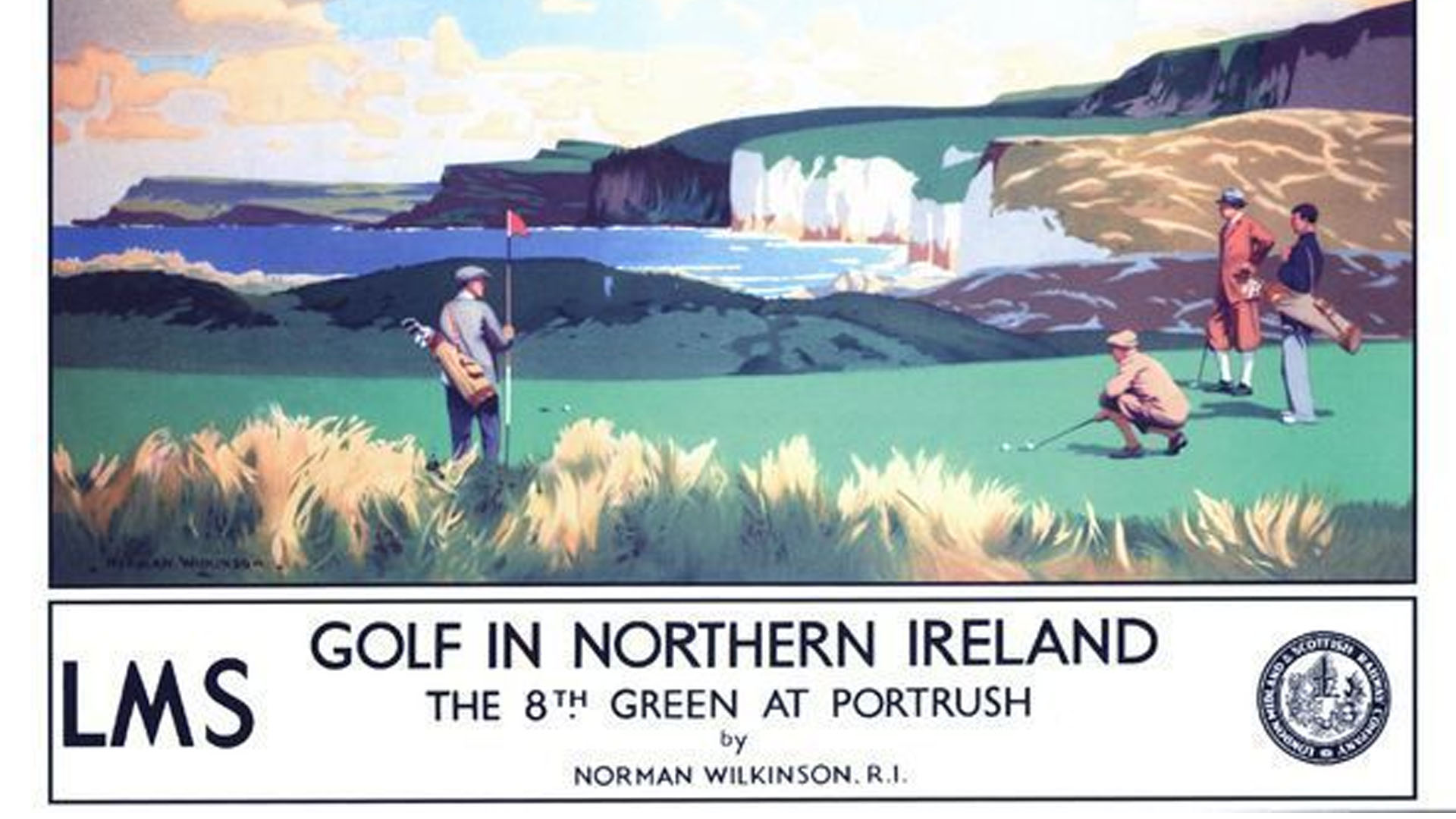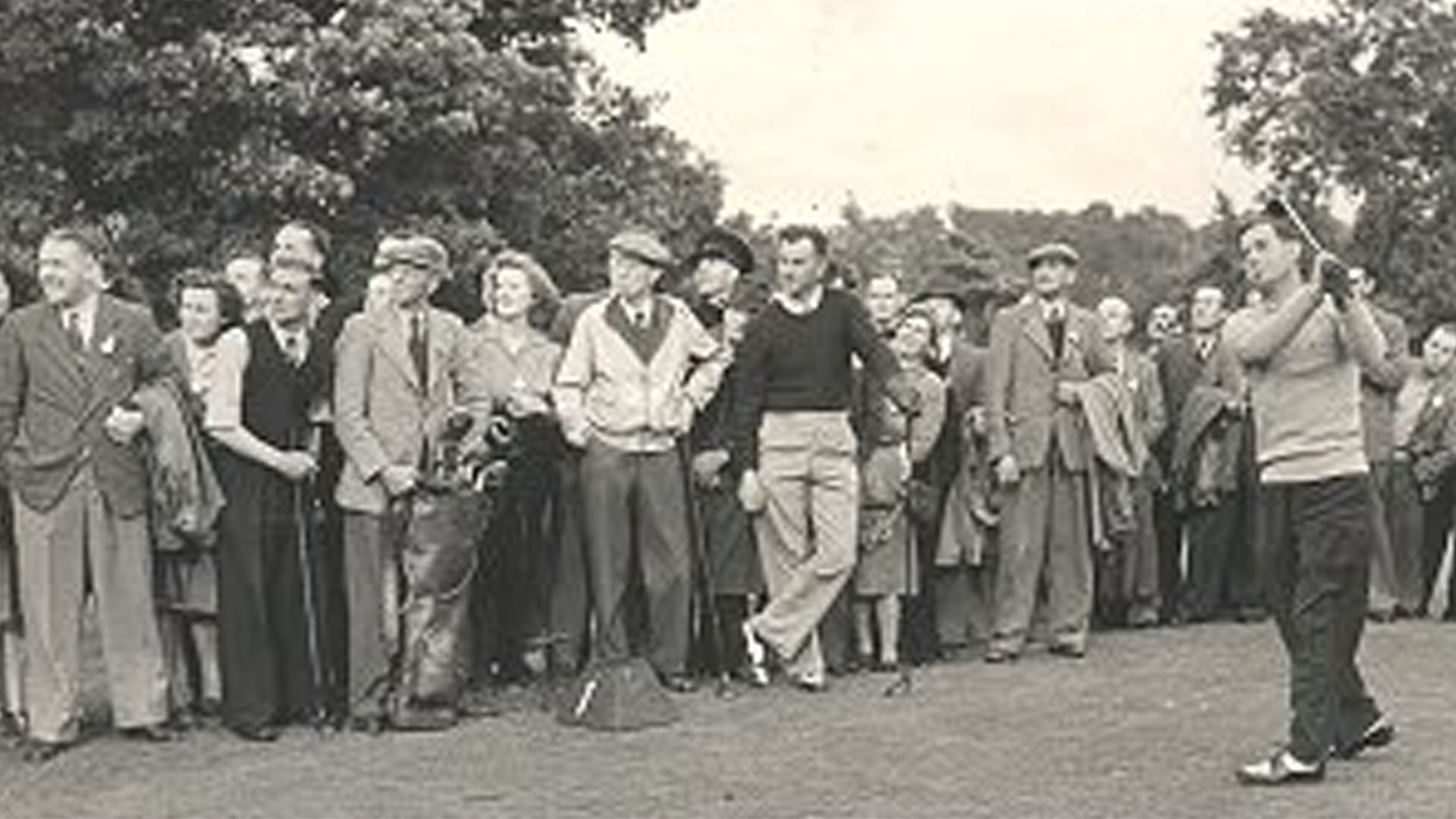Northern Ireland golf courses like Royal Portrush have hosted some of the world's greatest tournaments. Players like Rory McIlroy, Darren Clarke, and Graeme McDowell have taken the world by storm. Northern Ireland has always had an affinity with golf and between 1939 and 1945 was no different.
The expanses of foliage and rolling hills of Northern Ireland make it ideal for golfing. The same landscape also proved exceptional in training of troops during the war. Tees made way for tanks across the courses but life went on as best it could.
Some of today’s stars of the game are as interested in the events as we are.
It may come as a surprise but I also really started to get into history while I was at school. I found the projects about World War Two fascinating – perhaps when I get the time again, I could pick up where I left off.
Rory McIlroy
Ballycastle Golf Club
In the middle of the Ballycastle Club in Co. Antrim stands the ruins of Bonamargy Friary, a Franciscan institution dating back to the 1500s. Many of the graves around the friary date back many hundreds of years but there are several dating to World War Two. Buried there are William Fiskin of the SS Loughgarry, John Robert Townshend of the SS Nerissa, Private Edward Charles Jordan, and Aircraftman James McDonald.
Balmoral Golf Club
Near the centre of Belfast is Balmoral Golf Club. The 18 hole, par 69 course opened in 1914. Fred Daly, a major player in the pre- and post-war eras had an association with the club. During World War Two, a prisoner of war camp stood next to the course. There are stories of players and prisoners exchanging cigarettes for golf balls to get back on the green. An air-raid shelter stood on the 13th fairway.
Bangor Golf Club
Members of the club in Bangor, Co. Down may have noticed a Type 22 pillbox with rifle ports on the fairway. The building is now used for storage but during the war, the area was cleared to allow views over Bangor. When the Luftwaffe bombed Bangor, a landmine fell on the 1st fairway. It exploded four days later. Steel posts on the second fairway prevented planes landing. A Tillage Order in 1940 set aside 18 acres for growing crops.
Belvoir Park Golf Club
The course at Belvoir Park Golf Club was one of the finest parkland layouts in Northern Ireland. On the outskirts of Belfast, it found use during the war for cultivation. Crops of potatoes and flax were grown on the 3rd, 4th, and 5th fairways as part of the Dig For Victory campaign.
Donaghadee Golf Club
A surprise visitor to Donaghadee Golf Club in the 1930s was Joachim Von Ribbentrop. The Nazi Foreign Minister was a guest of Lord Londonderry. He was visiting Mount Stewart in Co. Down when he stopped for a round of golf at the nearby course in Donaghadee.
Dunmurry Golf Club
Samuel Maxwell “Max” McCready lived next to the club at Dunmurry in Co. Antrim. He was a regular on the original nine-hole course where he honed his skills in the 1930s and 1940s. Max served in the Royal Air Force as a navigator on combat missions over Europe. After the war, he became a regular on the amateur circuit winning the British Championship in 1949.
Greencastle Golf Club
The course at Greencastle in Co. Donegal was the scene of a crash landing on 24th June 1945. Lieutenant Gerald Wills Worner brought his Grumman Hellcat I down on the open green land after engine failure en route from RNAS Eglington, Co. Londonderry. The young New Zealander survived the incident and his damaged plane was returned across the border three days later.
Portadown Golf Club
In the heart of Co. Armagh, Portadown Golf Club lies in a woodland setting. It’s a course with a strong history, particularly around the 3rd tee. The back tee on the 3rd came about as a result of labour carried out on the course by German prisoners of war. There were nearby POW camps in both Portadown and Gilford. During the war, the original 18 hole course was cut back to nine holes. The remaining land was cultivated to grow flax and potatoes.
Shandon Park Golf Club
The golf course at Shandon Park in East Belfast suffered damage during Belfast Blitz of April and May 1941. It’s location in an area not far from either the docks or the parliament buildings at Stormont left it in the direct path of Luftwaffe bombers.
Tandragee Golf Club
In 1939, the local council allowed members of the forces to use the golf course at Tandragee for free. There are stories of park members threatening to park their tanks on the green unless they were permitted play on Sundays. In 1941, Irish Open Champion Fred Daly teed off at Tandragee. By 1942, J Patterson, the greenkeeper had his wage raised and was permitted time off to train with the Home Guard.
Next time you’re touring around Northern Ireland or driving off on a course, keep an eye out for some of those wartime reminders. If you have any other stories of golf courses through the war years, we would love to hear them.

